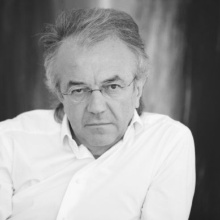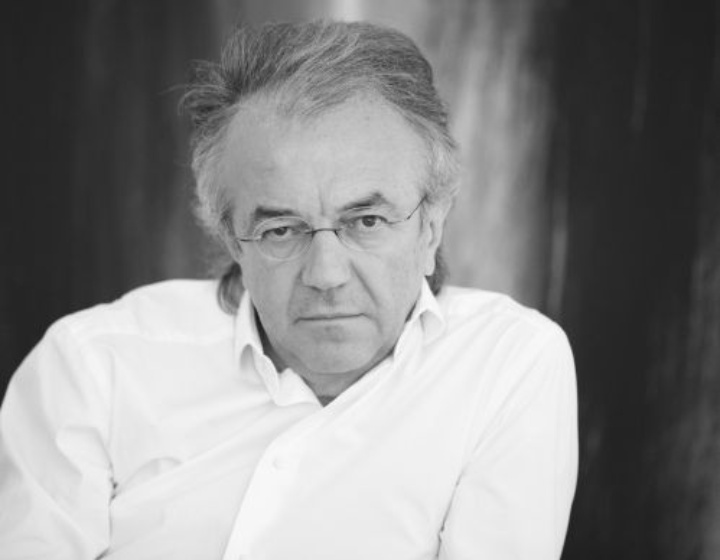The head of the Institute for Lightweight Structures and Conceptual Design (ILEK) at the University of Stuttgart, Prof. Werner Sobek, is being awarded the Fritz-Leonhardt-Prize for his life’s work. The internationally significant engineering prize honours excellent civil engineers who combine form, function and aesthetics in engineering in architecture in an exceptional way. Sobek is the sixth prizewinner of the Fritz-Leonhardt-Prize that is awarded every three years by the Chamber of Engineers Baden-Württemberg (INGWB) with the support of the German Association of Consulting Engineers (VBI). This year’s award will be presented on 4 th July 2014 in the Stuttgart State Gallery. The eponym of the prize is the worldwide renowned civil engineer and former Rector of the University of Stuttgart, Prof. Fritz Leonhardt (1909-1999; amongst other things, Stuttgart Television Tower).
The President of the Chamber Prof. Stephan Engelsmann commented on the reasoning of the prize jury: "Werner Sobek is one of the most important civil engineers of the present day, a charismatic engineer, whose work enables us to discover the future of architecture. The basis of his innovative and visionary work forms the concepts of design, material optimisation and sustainability. For Werner Sobek developing, designing and constructing are some of the precursors of sustainable construction, processes to be observed holistically. In his projects engineering sciences and design competence are inextricably interwoven with each other."
Minister of Science Theresia Bauer, who will be participating in the award ceremony in July, congratulated Mr Sobek: "Werner Sobek is not only an eminent authority in innovative construction in Stuttgart and worldwide but also an advocate of sustainability for which emission protection or resource protection are just as important as architectural aesthetics. In so doing he neither lets himself be stopped by disciplinary borders or by state borders, which is also impressively proven by his international work"
Werner Sobek’s work comprises various fields of architecture, such as high-rise buildings and stadiums, facades and special constructions, traffic structures but also exhibition stands and residential houses. Examples are the retractable roofing of the Hamburg-Rothenbaum stadium, the glazed tensile structure of the Rhön Clinic in Bad Neustadt, the exhibition stands for AUDI, Deutsche Post and MERO, the glass facades of the Sony-Center in Berlin, the large-span steel construction at Bangkok Airport, the altar for the visit by Pope Benedict XVI. 2011 in Freiburg or the Cité du design in St. Etienne. Lightweight construction and transparency are concepts that play a great role in his work. He enriched Stuttgart, among other things, through the Mercedes-Benz Museum, the Art Museum and his residential house R128. In July 2014 the B 10 was opened, the first active house in the world, developed according to the principle "Triple Zero": The building requires "zero" energy since it generates enough itself, it produces "zero" CO2 emissions and leaves behind “zero” waste when dismantled.
Brief biography of Werner Sobek
Werner Sobek was born in Aalen on 16 th May 1953. He studied civil engineering and architecture at the University of Stuttgart, among others under Jörg Schlaich, Klaus Linkwitz, Jürgen Joedecke and Frei Otto. In 1991 he became a professor for supporting structures and constructive design at the University of Hanover. In 1992 he founded the company group of the same name that today employs over 200 staff at locations in Stuttgart, Frankfurt, Moscow, New York, Istanbul, London, Dubai and Sao Paulo. In 1994 he was appointed by the University of Stuttgart where he initially became the successor of Frei Otto as well as also the successor of Jörg Schlaich in 2001. Since then he has managed the Institute for Lightweight Structures and Conceptual Design (ILEK) at the University of Stuttgart he founded himself. From 2008 to 2014 he held the Mies van der Rohe chair at the Illinois Institute of Technology in Chicago. Furthermore, he teaches as a guest professor at numerous universities at home and abroad. His company, the Werner Sobek Group, is an association of planning offices for architecture, structural engineering, façade planning, sustainability consultation and design operating worldwide.
He is the founder and chairman of the Initiative AED Architectural Engineering and Design in Stuttgart, he is one of the founders of the German Sustainable Building Council DGNB and was its president. In 2011 he founded with others the Stuttgart Institute of Sustainability Stiftung e.V. (SIS) and he has been its president ever since. Werner Sobek has been awarded a multitude of national and international prizes and honours for his work, including the Order of Merit by the State of Baden-Württemberg.
Background
The Fritz-Leonhardt-Prize has been awarded every three years since 1999 to excellent representatives of contemporary international engineering architecture by the INGBW with support of the VBI. The eponym is the worldwide renowned Stuttgart civil engineer Prof. Fritz Leonhardt (1909-1999; among others Television Tower Stuttgart). The prize is not endowed; a deed is awarded as well as an engraved prize sculpture. It originates from the sculptor Roland Martin (* 1927 in Tuttlingen/Baden-Württemberg). The prize-winners up to now have been the French civil engineer Michel Virlogeux (1999, Normandy Bridge), the Stuttgart Professor Jörg Schlaich (2002, filigree supporting structures) and the Basle Professor René Walther (2005, cable-stayed bridges with very slim longitudinal beams), William F. Baker from Chicago (2009, sky-scrapers like Burj Khalifa, Dubai) as well as Professor Alfred Pauser (2012, Danube City Bridge Vienna).
Further information on the prizewinner, photos as well as the FLP logo at: www.fritz-leonhardt-preis.de



